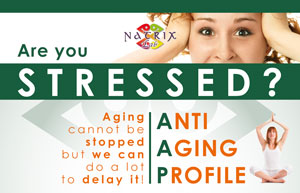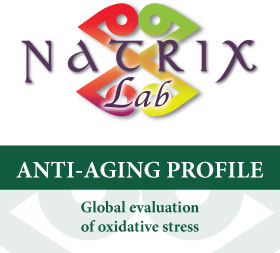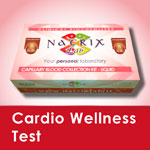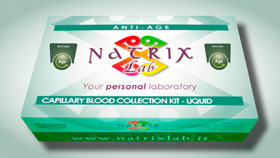What is it and what is it used for?
The ”Antiaging Profile” (A.A.P.) is a global balance of oxidation stress, i.e. an evaluation of the balance between production of free radicals and antioxidant power. The Antiaging profile includes the Free Radical Test (F.R.T.) for the dose of free radicals, and the Antioxidant Capacity Test (A.C.T.) to evaluate the antioxidant power.
The test is recommended to understand your personal level of aging and health by controlling the level of free radicals in your organism and your antioxidant power: in antiaging terms, braking the balance between the production of free radicals and the antioxidant power is harmful for the health of your organism, which is why we need to know both the antioxidant and the oxidant components.
Who should take the test?

This test is recommended for everybody, not just for certain disorders, to enable evaluating the antioxidant power of your organism.
In particular, we recommend the Antiaging Profile if:
- You want to monitor the impact of widespread risk factors on your organism, such as excessive exposure to UV rays, polluting substances, food contaminants.
- You smoke and drink excessively, or you do not do sufficient exercise.
- You have been diagnosed with pathologies correlated to oxidation stress, such as rheumatoid arthritis, arteriosclerosis, diabetes, Alzheimer’s disease.
- You want to monitor the effect of certain drugs on your organism, such as the pill, cortisones.
Where and how to take the test?
The test involves analysing a blood sample, and can be requested in analysis laboratories, medical centres, health spas and pharmacies that offer NatrixLab diagnosis services.
Preparing for the exam: fast for at least 8 hours before the sample is taken.
…and afterwards?

Once the level of free radicals in your organism has been determined, you should adjust your diet accordingly.
In the case of oxidation stress with an imbalance between the production of free radicals and the antioxidant power, we recommend a healthy, correct diet in order to reduce the increase of certain risk factors that increase oxidation stress, and where necessary supplement your diet with substances that are rich in antioxidants.
Repeating the test
We recommend repeating the test after 2-3 months. To monitor treatment or a pathology, we recommend repeating the test according to your doctor’s instructions.
Related tests
Related tests
Cardio Wellness Test

The “Cardio Wellness Test” is an indicator of the state of health of your cardiocirculatory system, and involves evaluating 12 parameters of the health of your heart, with integrations according to the latest indications from scientific research.
Find out more
Cellular Aging Factors

The “Cellular Aging Factors” determine the cell aging profile by means of analysing specific biomarkers, which assess the state of four key processes in the organism: methylation, inflammation, glycation and oxidation.
Find out more
Bibliography
- Favier A. Oxidative stress in human diseases. Ann Pharm Fr. 2006; 64(6): 390-396.
- Iorio EL. New diagnostic tools to evaluate oxidative bilance in the clinical practice. International Observatory of Oxidative Stress, Salerno, Italy.
- Briganti S; Picaro M. Antioxidant activity, lipid peroxidation and skin diseases. What’s new. J Eur Acad Dermatol Venereol. 2003; 17(6): 663-669.
 NatrixLab Laboratorio di analisi – nutrizionista
NatrixLab Laboratorio di analisi – nutrizionista

